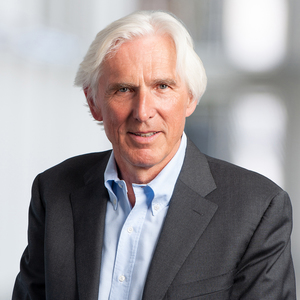The Director’s Dilemma – April 2025 Edition

Produced by Julie Garland-McLellan, Consultant at AltoPartners Australia and non-executive director and board consultant based in Sydney, Australia.
Contribution by Thomas Heyn, is a member of the German bar and holds a PhD in Labour Law. In 2002, he co-founded the Executive Search firm Jack Russell Consulting, the German branch of AltoPartners, based in Munich. Previously Thomas held Senior European Management positions with Hewlett Packard, Tektronix, and Oracle.
This edition of the newsletter was first published on The Director’s Dilemma website and the full newsletter is available for viewing here To subscribe to future editions of the newsletter, click here
The Director’s Dilemma - April 2025
This month we consider how to drive a change that will not be popular.
Winnie is the chair of the board of an employee-owned firm that evolved from a partnership. All of the directors are called ‘Partners’ and each runs a silo practice in his or her specialty within the company. She is really an ‘executive chair’ although her title is ‘Managing Partner’ and is finding it hard to run her own practice, administer the business, and also lead the board which is fettered by conflicts of interest and personal rivalries. The directors don’t act like directors; they act like chiefs of their own individual enterprises and compete for resources instead of collaborating to grow the firm.
Winnie doesn’t have the time or the expertise to develop and implement strategy over all of the different service lines. The company is large enough that it could benefit from a full time CEO, but the board members don’t want an outsider to tell them what to do. Younger partners who are not on the board are expressing frustration that growth has stagnated; they want more opportunities. Winnie is worried that they will leave to join other, higher growth, firms.
Decisive change is needed, and Winnie is keen to make it happen. She needs to build support at board level for this.
How should she proceed?
Thomas’s Answer
Given the current legal setting and the attitude displayed by the owners of the firm, it feels like being on board the Titanic shortly before the disaster: The company is facing serious challenges and risks, however the people in charge are not aware of it, or - even worse - ignore it.
We have the freedom to decide how we want to deal with things we don’t like. There are three proven options that Winnie can play through to move forward.
Love It
Accept the situation, stop fighting, and start improving your golf handicap
Leave It
Sell your equity and leave the company together with the best young talent, maybe setting up a new firm using the experience you gained
Change It
First Step: The Wake-Up Phase. Work with the Board, question the status quo, rock the boat, challenge the comfort zone. The first-class passengers on the Titanic continued to wine, dine and dance as the ship crashed into the iceberg. Involving the younger partners is key. Not everybody will like it, so what. No need to be everybody’s darling. Find allies and confidants, build coalitions. Be persistent, this is a long-distance marathon, not a sprint. You might consider hiring a personal coach with whom you can prepare your actions, test your arguments and who will act as a sounding board as well as a trusted advisor for you.
Second Step: The Planning Phase. Prepare the strategic direction by asking fundamental questions to guide your planning. Where do we - as a firm - want to go? What is our company’s positioning within a given time frame? What “is in it” for the key stakeholders? What is our plan concerning succession? How can partners who are retiring say goodbye in style and in good standing?
Third Step: Implementing the plan by taking small steps, utilising agile project management techniques, measuring milestones, celebrating successes and engaging in constant communication. Assess feedback and adapt the plan to ensure sustainability.
My personal advice for Winnie: If you don’t achieve the first step despite all your efforts, have a plan B for yourself. If you achieve the second step, make sure that you get proper compensation in case you will lead the third step.
Julie’s Answer
Partners are very different from directors and, while the firm has transitioned to a corporate model, the people have retained the behaviours that made them successful rather than adopt change and behaviours that will keep them successful into the future. Winnie must act before she burns out.
The first step is to realign her board and other senior leaders around a shared strategy that is enticing enough to encourage change. This should include a clear focus on areas that are expected to grow and a careful identification of those that will either be maintained or allowed to atrophy.
Her next step is to develop a logical framework for rewarding the senior leaders for the success of the organisation, rather than the success of their own particular part of it. This structure must be compelling and needs to be supported by all concerned. It should include an ‘escape mechanism’ for those who are not able or willing to change. If Winnie can’t get this right everything else will fail.
The final step is to enrol the next generation of leaders in understanding, supporting, and helping to drive the change. She must not start this until she has a body of support from steps one and two.
At each step, Winnie will need specialist help in designing strategic frameworks that support the desired change and also ‘political’ support from the respected ‘elders’ within her company. If she can’t get that support, Winnie should leave. This company needs to change, and if you can’t change the people, you can’t change the company.

